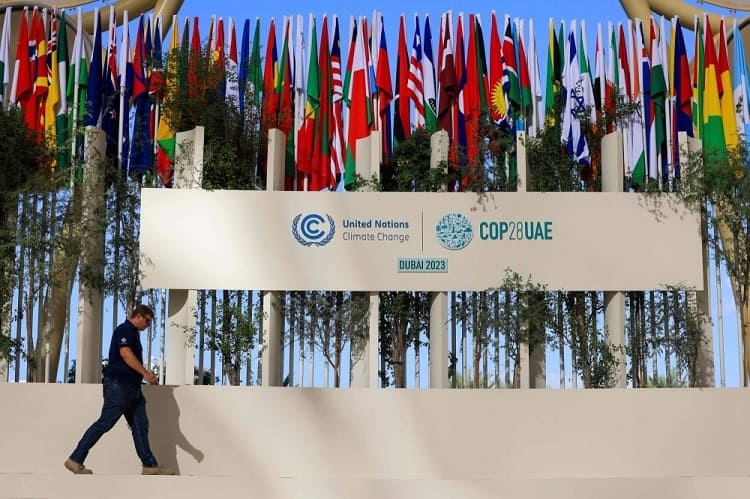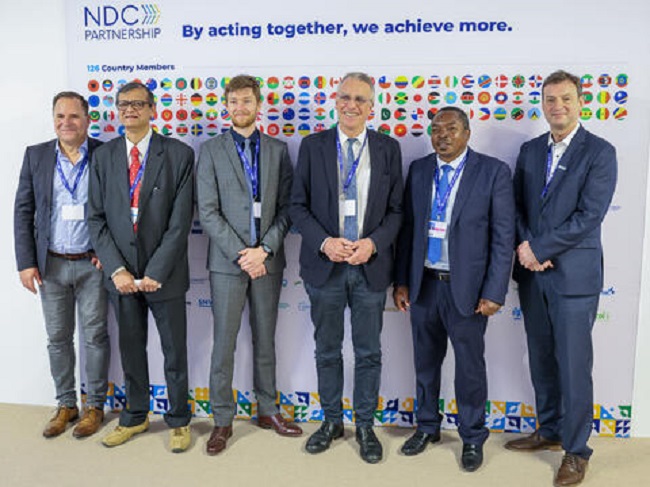
December 3, COP28, Dubai, UAE – About 25 participants convened at a side event during COP28, delving into detailed discussions on the regulatory, technological, and developmental aspects of phasing out SF6 gas in developing countries. Hosted by the UN Climate Technology Centre and Network (CTCN) in collaboration with CTCN National Designated Entity (NDE) Germany and the German Federal Ministry of Economic Development and Climate Action, the high-level panel provided key considerations for the importance and roadmap of phasing out SF6 gas.
The ambitious goals of the Paris Agreement, aiming to limit the temperature increase to 1.5°C, underscore the critical role of decarbonizing the energy sector in combating greenhouse gas emissions.
About the geothermal harm of SF6 gas:
Sulphur Hexafluoride (SF6) is used in electricity grids and has a global warming potential 24300 higher than CO2. SF6 emissions are strongly rising with the extension of grids and the electrification of industries.
Many nations face challenges in the pursuit of SF6 phase-out, lacking SF6 inventories and neglecting this potent greenhouse gas from their Nationally Determined Contributions (NDCs). This gap in policies, incentives, and coordination impedes the swift transition to SF6-free technologies, despite their proven commercial feasibility.
Officials’ comments on SF6 gas removal methods at the COP28 Dubai:
Arno Kaschl, Senior Policy Officer at the European Commission’s Directorate-General for Climate Action emphasized the EU’s commitment to swiftly phase out SF6 in new electrical switchgear equipment by 2032, citing the newly adopted EU legislation as a “crucial step in the global efforts under the Paris Agreement, showing what we can achieve when policymakers and industry work together, pushing the boundaries for innovation and deployment of climate technologies.”
Kaschl further highlighted the EU’s longstanding support to the CTCN: “The EU and its Member States are the biggest donors to the CTCN, having contributed more than USD 36 million to date, including to the CTCN’s current Programme of Work and its activities supporting developing countries’ efforts to reduce the use of F-gases.”
“At COP27, the European Commission pledged EUR 2 million to the CTCN. But since then, we’ve gone even further, and earlier this year launched another EUR 3 million grant to the CTCN” he noted.

Significant steps have already been taken, with a three-day learning exchange held in July by the CTCN and the NDE of Germany, in collaboration with the German Ministry of Economic Affairs and Climate Action (BMWK). This event focused on technologies for the decarbonization of electrical transmission and distribution grids through F-gas regulations and policies.
Collaborating with the NDE of Germany and financing actors, the CTCN anticipates multiple follow-up projects addressing identified bottlenecks in the adoption of F-gas-free technologies. These initiatives include the development of national inventory or reporting systems, the formation of stakeholder alliance groups for raising awareness on SF6, a cost-benefit analysis of available options, and the installation of testbeds.
Stefan Wenzel, Parliamentary State Secretary at the Federal Ministry for Economic Affairs and Climate Action of Germany, underscored the significance of “empowering stakeholders with insights needed to shape policies across the entire energy system value chain: “SF6 as one of the most aggressive greenhouse gases needs to be phased out and avoided as fast as possible. This is also necessary for the rising acceptance of the expansion of renewables. This is a clear case for the Technology Mechanism.”
Wenzel’s remarks highlight the pivotal role of collaborative efforts in driving positive change, fostering sustainability, and building resilience in the energy sector. Furthermore, in alignment with this vision, he noted, “Germany supports the Climate Technology Centre and Network (CTCN), particularly in the crucial domains of industrial decarbonization and renewable energy systems. This collaboration stands as a compelling example of how the technology mechanism can effectively operate to achieve common goals.”
In line with its third Programme of Work (2023-2027), the CTCN works in tandem with countries through learning exchange events with NDEs, public institutions, NGOs, and the finance and private sector to accelerate the transition to a resilient and clean energy system.
You can watch the recording in the Switchgear Content LinkedIn group here.



